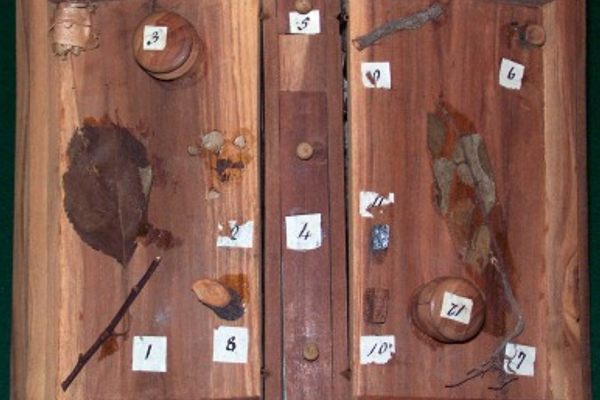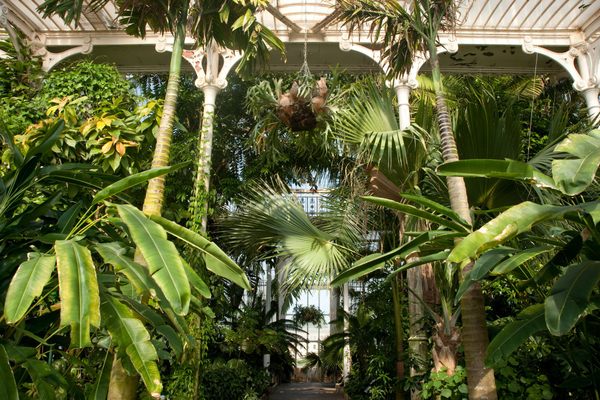Xylotheks: Wondrous Wooden Books That Hold Wooden Collections
Xylothek in the library of Lilienfeld Abbey, Austria (photograph by Haeferl)
A xylothek (from the Greek for tree, xylon, and storing place, theke) is an object where the container is a fundamental component of the contents. The term usually refers to books that are both made of wood and filled with wood specimens. Xylotheks (also spelled xylotheques) first began appearing at the end of the 17th century in cabinets of curiosity. As time progressed, they grew larger and more systematic, with hundreds of individual volumes in a single collection, and are now consulted by those working in forestry, botany, forensics, art restoration, and other fields.
Xylotheks were particularly popular in late 18th century and early 19th century Germany. In these constructions, each book in the xylothek was made out of a particular type of wood, the spine covered with the corresponding bark and decorated with associated moss and lichens. Once opened, the book would reveal samples of dried leaves, flowers, seedlings, roots, and branches, with a special compartment in the spine holding a written description of the species’ biology and use. The Special Collections department of the Swedish University of Agricultural Sciences library in Alnarp, Sweden, contains a beautiful example of this type of xylothek, made in Nürnberg, Germany, at the start of the 19th century. Similar xylotheks are also found in France, Austria, Italy, and the Czech Republic.
Xylotheque at the Strahov Monastery in Prague (photograph by Régine Fabri)
Some xylotheks featured paintings of specimens inside rather than the plants themselves. The Economic Botany Collection at England’s Kew Gardens has a 19th century xylothek from Meiji Japan that includes 26 panels, each made from the wood and bark of a particular tree and painted with the leaves, fruits, and flowers of that species. The Botanical Museum in Berlin has a similar painted example from Japan, with 152 panels.
Pear wood example from a 19th century Japanese xylothek at Kew Gardens (via WRBG Kew)
Xylotheks have also provided inspiration for artists. In 2012, Mark Dion created a new display for the 18th century Schildbach Xylotheque in Kassel, Germany, which encompasses 530 wooden volumes of different tree and shrub species. (The piece is on permanent display at Kassel’s Natural History Museum.) As part of the 2012 installment of documenta(13), Dion made new oak hexagonal chambers that place each sample in its continent of origin, and introduced his own additions.
Mark Dion’s Schildbach Xylotheque (photograph by David Gómez Fontanills)
Today the term xylothek is also used to refer to huge collections of wood specimens not necessarily housed in wooden books (like those at the Samuel James Record Collection of Yale’s Forestry School, which contains 60,000 samples). But the origins of such collections lie in these more humble and yet strikingly beautiful objects, which have been made all the more precious as deforestation renders some trees extinct.
















Follow us on Twitter to get the latest on the world's hidden wonders.
Like us on Facebook to get the latest on the world's hidden wonders.
Follow us on Twitter Like us on Facebook